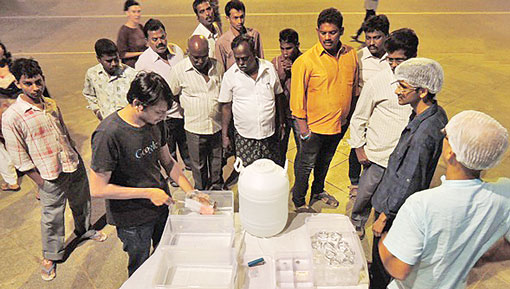3 Using the Business Model Canvas
The most productive way to use the Business Model Canvas is with your colleagues and/or partners and other stakeholders. You don’t need to have a particularly well-developed idea or plan to start with; in fact, the tool can be very productive in helping you to form and shape your idea. The case study excerpt in Case Study 3, below, is taken from the repository on the DIY Toolkit website, where you can read the interview in full. Akshay Roongta, COO of Amrutdhara – a small start-up organisation in India – talks about working with mentors to refine Amrutdhara’s value proposition.
Case Study 3: Refining an idea using the Business Model Canvas
Originally we were driven by our ambition to eradicate bottled water in the city of Pondicherry. Our idea for Amrutdhara was to create a viable alternative to plastic bottled water. After experimenting with prototypes, we had a fairly clear idea of the problem we wanted to solve, and a sense of how to go about it in terms of technology and product.
We sought some input from our mentors, and to advance our thinking they threw up the idea of focusing on the issue of improving accessibility to water rather than reducing plastic waste. This shift in approach meant that we needed to rethink what we were doing and how we were positioning ourselves. This shift signalled a few things for us, in terms of our target markets (not just public spaces, but also schools, hospitals, institutions), design of the product to be more modular, and most importantly the kinds of consumers we were targeting.
We had already pivoted a couple of times, but each time we had built on the work we had done previously. This time we decided to start from first principles. We used the Business Model Canvas as a structured and easy tool to analyse the new idea in clear terms for everyone involved.

In both the case studies, you can see how a team approach helped to get the most value from using the Business Model Canvas tool.
2.1 Refining your value proposition
